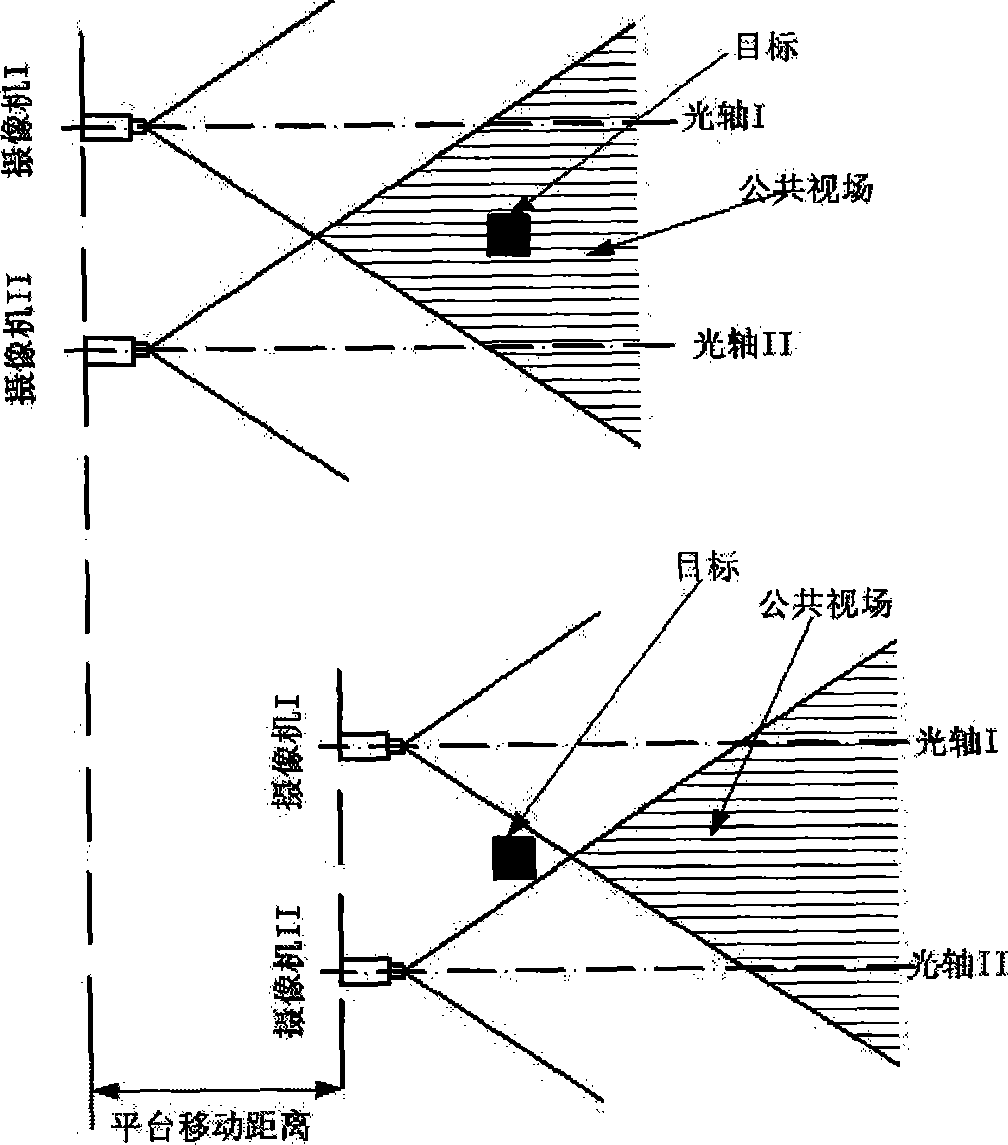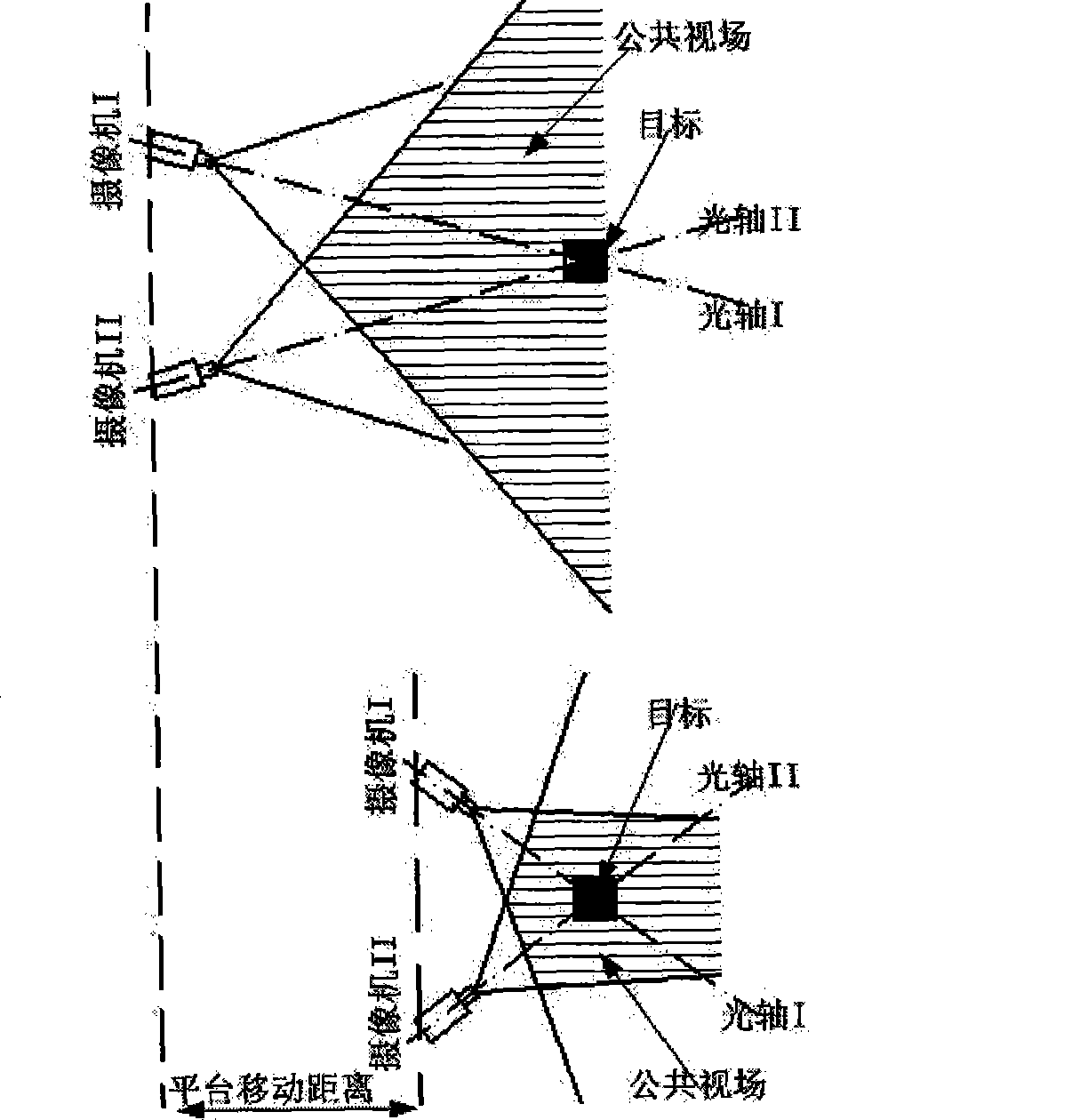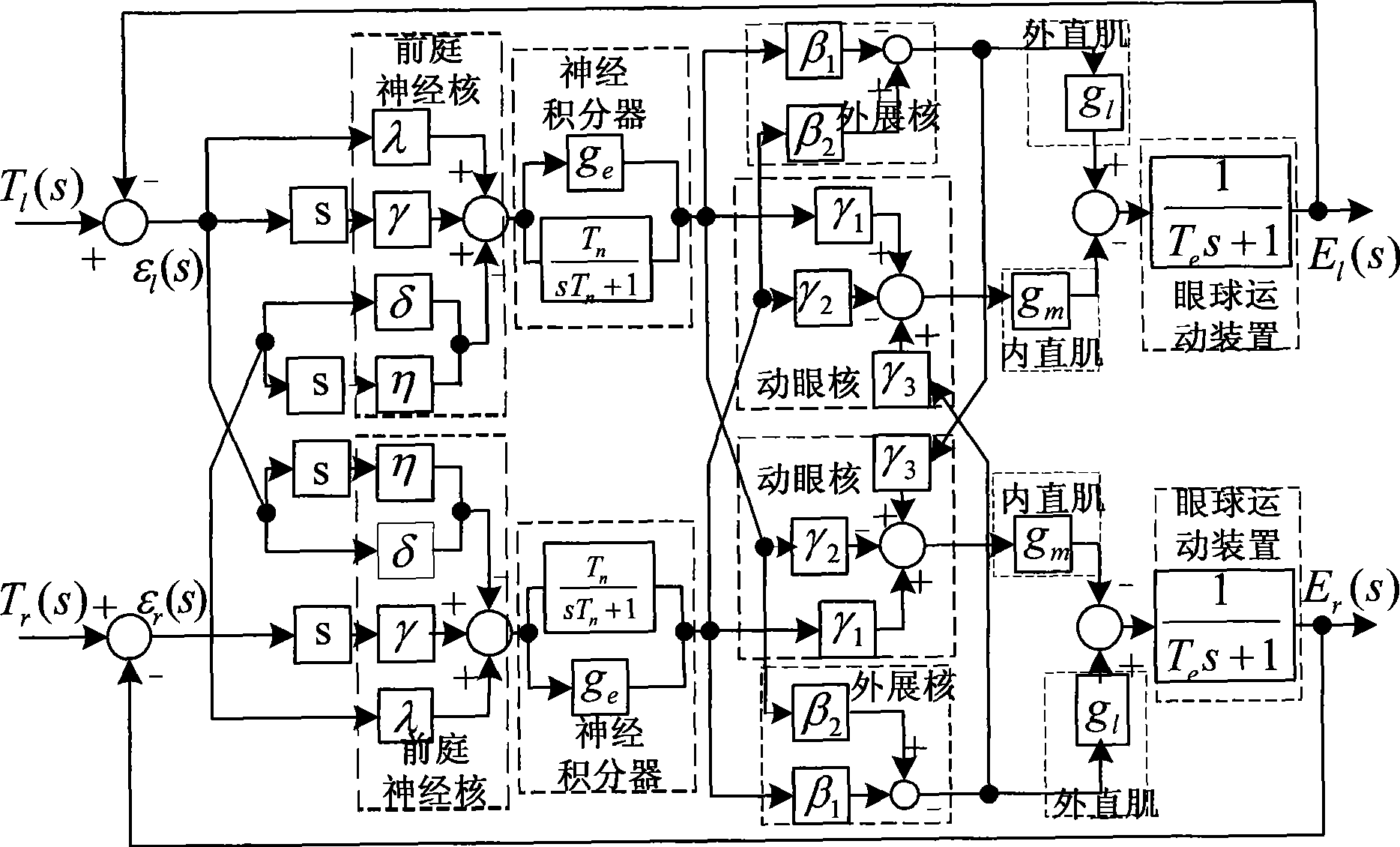Method for reducing blind region by dual video camera monitoring system on movement platform
A dual-camera, motion platform technology, applied in the parts of TV systems, stereo systems, image communication, etc., can solve the problems of inaccessible target areas in the public field of view, slow processing speed, and limited degree of recovery.
- Summary
- Abstract
- Description
- Claims
- Application Information
AI Technical Summary
Problems solved by technology
Method used
Image
Examples
Embodiment Construction
[0027] A preferred embodiment of the present invention is described in detail as follows: see Figure 5 , this method is based on the principle of anisotropic movement of bionic eyes to reduce the blind area of the dual-camera monitoring system on the motion platform. The angle and direction of the dual cameras make the target area always in the common field of view of the two cameras, so as to obtain the three-dimensional depth information of the target area. Its control operation steps are as follows:
[0028] 1) Sensor measurement: measure the camera motion platform and the position parameters of the measured target;
[0029] 2) A / D conversion: A / D conversion is performed on the continuous analog quantity obtained by the sensor to obtain a digital quantity;
[0030] 3) Digital filtering: smoothing the sampling signal, enhancing the effective signal, eliminating or reducing noise;
[0031] 4) Scale conversion: Calibrate the sensor to obtain the input value corresponding...
PUM
 Login to View More
Login to View More Abstract
Description
Claims
Application Information
 Login to View More
Login to View More - R&D
- Intellectual Property
- Life Sciences
- Materials
- Tech Scout
- Unparalleled Data Quality
- Higher Quality Content
- 60% Fewer Hallucinations
Browse by: Latest US Patents, China's latest patents, Technical Efficacy Thesaurus, Application Domain, Technology Topic, Popular Technical Reports.
© 2025 PatSnap. All rights reserved.Legal|Privacy policy|Modern Slavery Act Transparency Statement|Sitemap|About US| Contact US: help@patsnap.com



